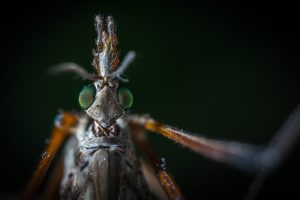The Environmental Toll of Insect Control
Dear EarthTalk: What are the health and environmental consequences of some of the methods used to control mosquitoes, ticks and other insects?
—Hunter White, Lafayette, IN
 By far the most popular form of insect repellent available to consumers in the U.S. is diethyl-meta-toluamide, known popularly as “DEET.” According to the U.S. Environmental Protection Agency (EPA), each year approximately one-third of the U.S. population uses insect repellents containing DEET, which is the active ingredient in more than 230 products, including sprays, lotions, liquids and wristbands.
By far the most popular form of insect repellent available to consumers in the U.S. is diethyl-meta-toluamide, known popularly as “DEET.” According to the U.S. Environmental Protection Agency (EPA), each year approximately one-third of the U.S. population uses insect repellents containing DEET, which is the active ingredient in more than 230 products, including sprays, lotions, liquids and wristbands.
But recent laboratory animal studies have found that frequent and prolonged exposure to DEET can cause neurons to die in regions of the brain that control muscle movement, learning, memory and concentration. Other studies using humans have found adverse effects ranging from skin irritation and blisters to memory loss, even seizures. Very high exposures, such as those that occur if the repellent is swallowed, have caused neurological damage in at least 18 children, three of whom died as a result. Yet despite these threats, the EPA insists that DEET products are safe as long as consumers follow the directions carefully.
Meanwhile, bug zappers—which emit ultraviolet light to draw pests—kill few if any mosquitoes, which are attracted not to light but to our body heat and the carbon dioxide we exhale. Some four million zappers are at work in the U.S., toasting nearly 71 billion insects—mostly non-target bugs—each month. The most common bugs killed are beetles, moths, flies, bees, ants and wasps, many that are themselves beneficial for insect control as well as pollination.
But while there are issues with many localized forms of pest control, most troublesome are the potential public health effects of the widespread application of “organophosphate” pesticides, such as Malathion, intended to wipe out large mosquito populations for miles around. In recent years, cities and states looking to stave off mosquito-borne maladies like West Nile Virus have undertaken large-scale mosquito control projects—often involving the use of Malathion. According to Pesticide Action Network, Malathion is chemically related to the nerve gases used in World War II. It kills by disrupting nervous system processes, and has been linked to cancer, nervous system disorders and a wide range of other maladies in humans.
One environmentally friendly alternative mosquito control method is Bacillus thuringiensis israelensis (BTI), a bacterium that can be applied to mosquito breeding grounds, usually in places where standing water collects. BTI is a naturally occurring organism that targets only the larvae of insects, and as a result poses no health threat to humans or wildlife. Some hardware stores stock BTI-infused mosquito “dunks” which are activated when wet. Another somewhat more costly option is the Mosquito Magnet, a trap that attracts mosquitoes by emitting an irresistible combination of carbon dioxide, heat and moisture. But perhaps the safest way to avoid bug bites is to don the always-dapper combination of a long-sleeved shirt, long pants, ankle socks and a wide-brimmed hat.
CONTACTS
- U.S. EPA DEET Page, www.epa.gov/pesticides/factsheets/chemicals/deet.htm
- Pesticide Action Network, www.panna.org

